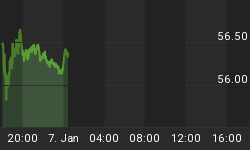Interest rates are at historical lows in the US and in many other countries. As the world's economies begin to come out recession, those rates will eventually begin to rise. Some countries have begun, and others are planning when and how much.
Two important risks for bonds are credit risk and interest rates risk. The crash of 2008 raised the perceived level of credit risk, which briefly depressed credit bonds and inflated US Treasuries, which are perceived to be the lowest credit risk. Much of the perceived credit risk has dissipated and bond prices have at least substantially recovered in most cases. However, because of the historically low interest rates, there is now more rate increase risk than opportunity (bonds tend to fall when rates rise and to rise when rates fall).
It is probably time to think about shortening the duration of portfolio bond holdings to reduce exposure to interest rate risk, and/or to reallocate some portion of bond holdings (fixed income) to above average equity yield positions (income growth). The capital gains in bonds over the past year are not likely to be repeated in the near term, while some degree of reduced total return and possible capital loss in some bonds are fairly likely as interest rates rise.
![]() Interest Rates: What They Say Now
Interest Rates: What They Say Now















